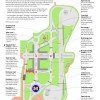"...48 companies have signed up as partners, including Ford, General Motors, Nissan, Bosch, Delphi, Honda, Toyota, State Farm, Xerox and Verizon. Google and Uber are not among the partners."
http://www.washingtonpost.com/blogs...gan-where-self-driving-cars-are-being-tested/
http://www.washingtonpost.com/blogs...gan-where-self-driving-cars-are-being-tested/



